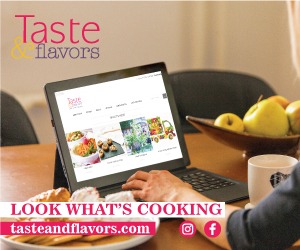

Demand for healthy, natural and organic foods and beverages (F&B) is no longer a niche trend, but rather a global movement. Consumers today are more conscious of their health and the environmental impact of their choices. According to a report by Statista, the global organic F&B market is expected to surpass USD 620 billion in size by 2026, driven by increased awareness of wellness and sustainability. Businesses that align their offerings with these consumer preferences can thrive by earning loyalty and fostering meaningful customer relationships. Below are seven ways to get started.
1-Know your customers
To succeed in the healthy and organic F&B market, it’s vital to understand what drives consumer choices. Today’s buyers prioritize:
• health benefits – consumers are seeking products free from artificial additives and packed with nutrients. Functional foods – those offering health benefits beyond basic nutrition, like immune-boosting or gut-health-promoting products – are particularly popular.
• transparency and trust – shoppers want to know where their food comes from. Clear labeling and ethical sourcing are critical.
• sustainability – eco-conscious consumers look for brands committed to reducing waste, using sustainable packaging and supporting regenerative agriculture.
2-Prioritize authenticity and quality
The key to winning over health-conscious customers is to provide authentic, high-quality F&B offerings. Ensure your products meet organic certification standards, signaling to customers that they are free from synthetic chemicals. Use minimally processed, recognizable ingredients. Avoid additives, artificial sweeteners and preservatives. It’s also important to cater to dietary trends, like gluten-free, vegan or keto-friendly options, to expand your market reach.
3-Share your story
Your brand’s story and values matter deeply in the organic market. Consumers resonate with brands that are transparent and purpose-driven. Tell your story by sharing your commitment to healthy living, ethical sourcing and sustainability through your marketing channels. If you are fortunate enough to receive them, prominently display certifications such as USDA Organic, Fair Trade or Non-GMO Project Verified on your packaging. These establish trust with your clients to help you gain authenticity in the market. Take the opportunity to partner with initiatives that align with your mission, such as supporting local farmers or ocean clean-up projects, as this will showcase your values in action to your customers.
4-Create and innovate
Stay ahead of the competition by innovating within the healthy F&B sector by launching drinks infused with superfoods, probiotics or adaptogens to cater to wellness enthusiasts. Develop healthy snacks or meal kits that suit busy lifestyles without sacrificing nutritional value, making use of locally sourced and seasonal ingredients, and spotlighting them.
5-Think green and local
Remember that sustainability is a cornerstone of the organic market. Align your business practices with eco-friendly initiatives, such as biodegradable, recyclable or reusable materials for packaging. Reduce waste by implementing strategies to minimize F&B waste, such as offering ‘ugly’ produce or surplus stock at discounts. Work with local producers. By partnering with local farmers, for example, you are not only supporting sustainability, but also boosting community ties.
6-Strengthen customer ties
Taking these steps will enable you to build a community around your brand that ultimately fosters loyalty and advocacy. It also paves the way for hosting events that will engage your audience, such as cooking classes, farm-to-table dinners or wellness workshops.
7-Don’t stand still
Finally, it’s imperative to regularly evaluate and refine your offerings to keep pace with changing consumer preferences and emerging trends. Doing so will support your efforts to stay relevant, competitive and authentic in the field of healthy and organic F&B offerings.

Duncan Fraser-Smith,
founder of The Craft Hospitality Group
Author of “Create to Plate”
@duncanfs
@crafthospitality.group
duncanfrasersmith.com
crafthospitality.group



















